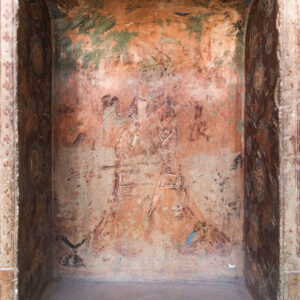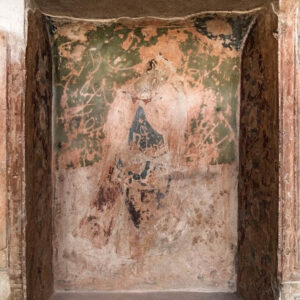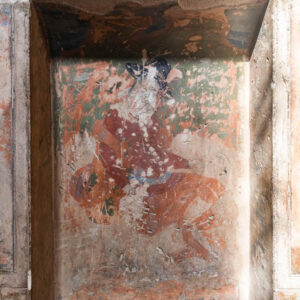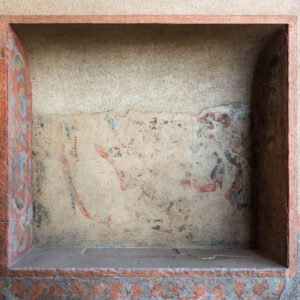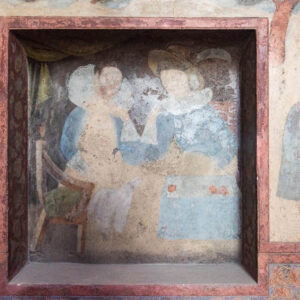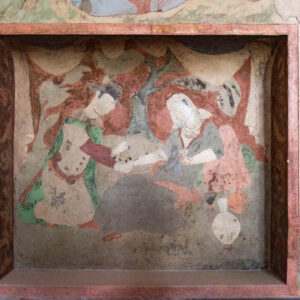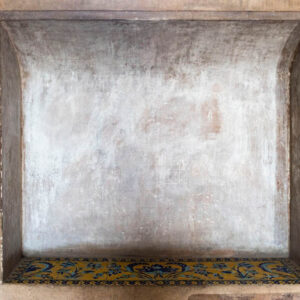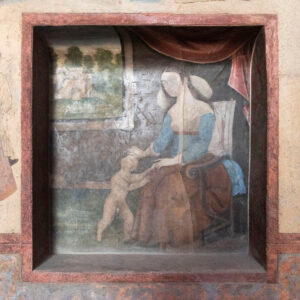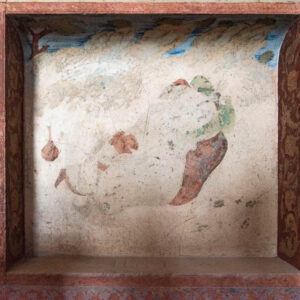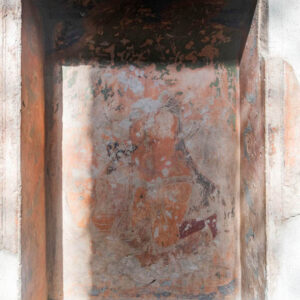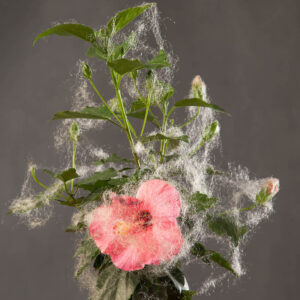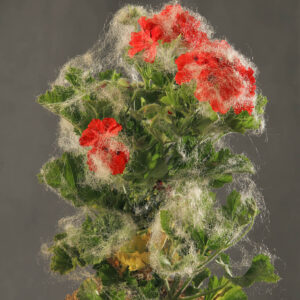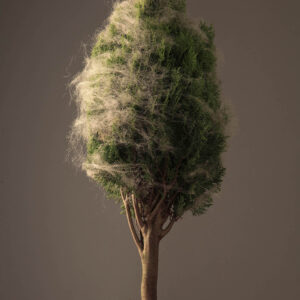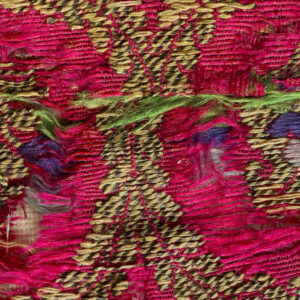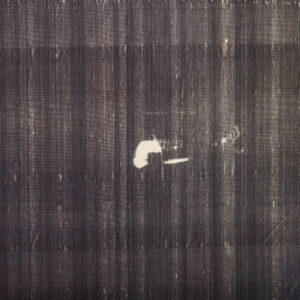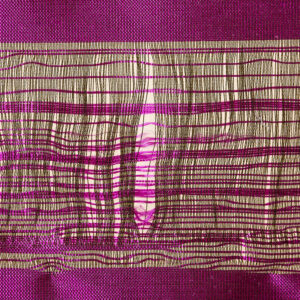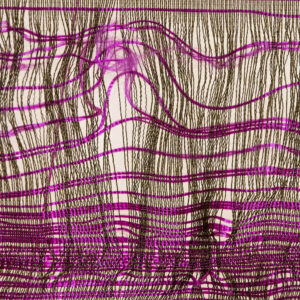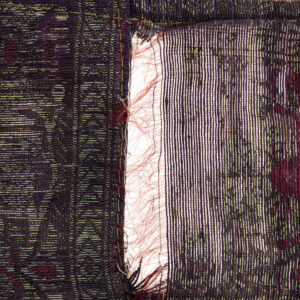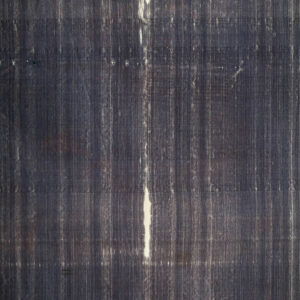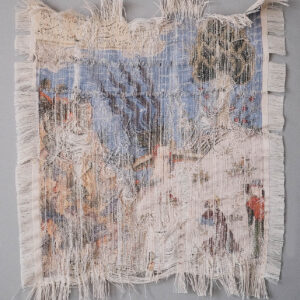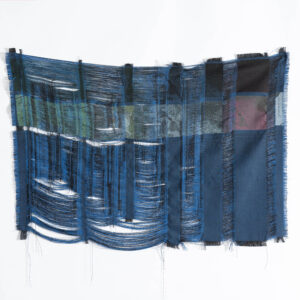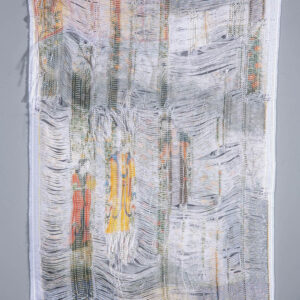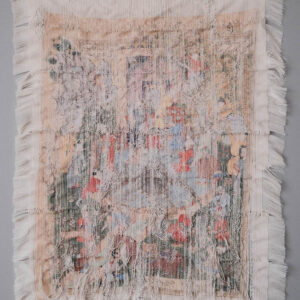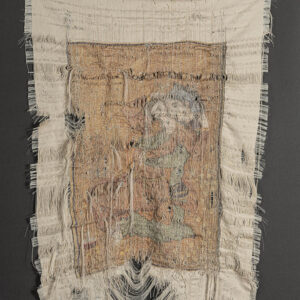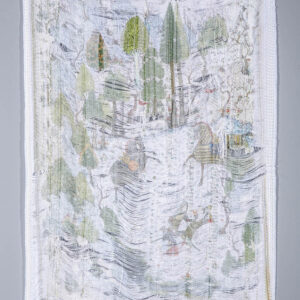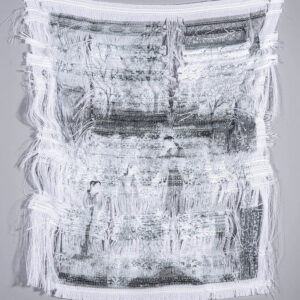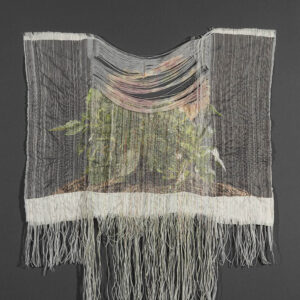Tattered Masterpieces
Solo Exhibition By Negar Farajiani23 July to 6 August 2021“Tattered Masterpieces” is Negar’s tenth solo exhibition and her first solo collaboration with INJA Gallery.
This collection consists of four parts: fabrics, photography of fabric details, arranged flowers and plants, and images of the paintings of Isfahan’s Ali Qapu Palace. In reality, she has focused on three themes: fabric, flora, and architecture.
She began by working with tattered fabrics that had begun to decay, either because of age or as a result of infestation. Her visits to Iranian gardens, where she witnessed trees ridden with pests, led her to installation photography with the theme of flowers and plants.
Some of her works represent her take on masterpieces of Iranian miniature, images printed on fabric and claimed as her own in a process of deliberate destruction. In addition to these concerns, her trip to Isfahan and a visit to Ali Qapu Palace inspired her to photograph wall paintings that had either deteriorated with time or had been vandalized by visitors.
In this collection, Negar draws our attention to mortality at the hands of time or those of human beings.
Tattered Masterpieces
With the belief that historical records carry with themselves the identity and mindset of the people of any land, there have been efforts throughout time to preserve and protect what remains from the past. Our historical heritage has constantly been faced with a battle against the phenomenon of deterioration, destruction, dissolution, and transformation.
It is indeed a difficult and complicated task to preserve and maintain what came to be but now struggles not to perish in its confrontation with time.
The preservation, protection, and confinement of objects and books in museum cases stems from our awareness of the need to resist against their mortality and destruction; destruction at the hands of termites who, if not deterred, will turn every single paper into dust overnight or slowly feed on the intertwined threads of silk fabrics and brocades. The penetration of moisture into such collections will dissolve the colorful existence of any objects within.
Infestation sometimes reaches structures and gardens, gradually leading to their transformation and destruction. Wars have also always been a serious threat to human legacy, accelerating this destruction even more.
In this collection, I have reproduced a part of these historical records that have faced transformation and destruction through deliberate interference, with another part dedicated to registering and depicting the decay historical artifacts have faced throughout time.
–
Negar Farajiani
Summer 2021
Negar Farajiani was born in the Iranian city of Yazd in 1977. She obtained a Bachelor’s degree in Graphic Design from the Tehran University of Art in 2000.
Negar is an interdisciplinary artist who uses a variety of mediums to portray different layers of Iranian life, both private and public aspects, in her works. Since 2011, the principal focus of her activities has been on the management of interactive/collaborative projects such as “Tehran Monoxide”, “Made in China”, and “The Destination Known”.
Negar’s works have been exhibited at Depo Istanbul, the Centre for Contemporary Art at Ujazdowski Castle in Warsaw, Mariane Ibrahim Gallery in Seattle, and at the Artissima Art Fair in Italy. She has also been awarded an art grant from the Pasfarda Arts and Cultural Exchange in Chicago and the Cheryl & Richard Ruszat Scholarship from the University of California – Irvine.
Her other activities have included collaboration with Apexart in New York, with the Komuna Warszawa performing arts theater in Poland, and with the 8th and 9th editions of the Persbook Project. She has also presented her projects at the Seattle Art Museum, Yale University, the University of Massachusetts, the University of California – Irvine, and at the Tehran University of Art.
